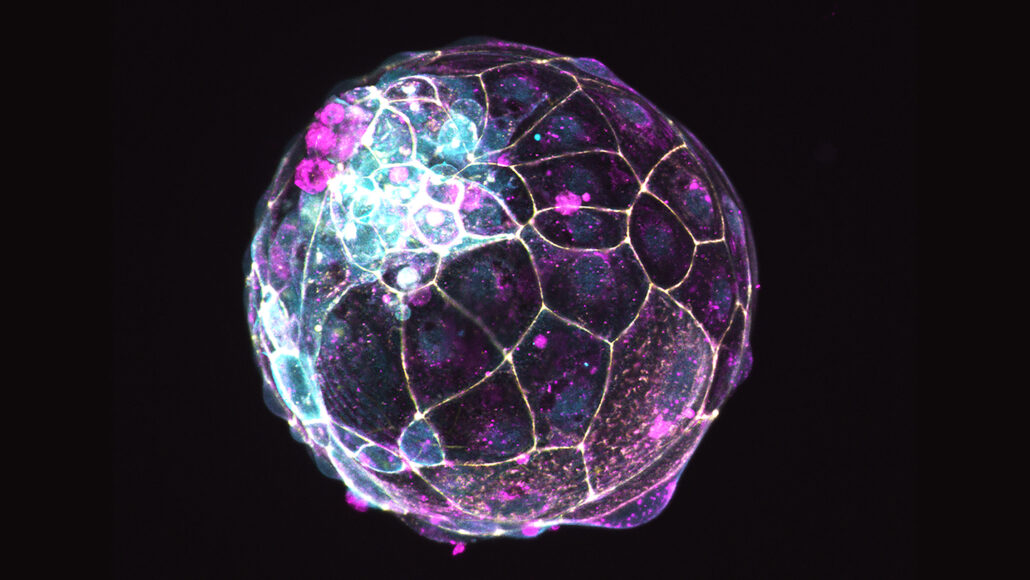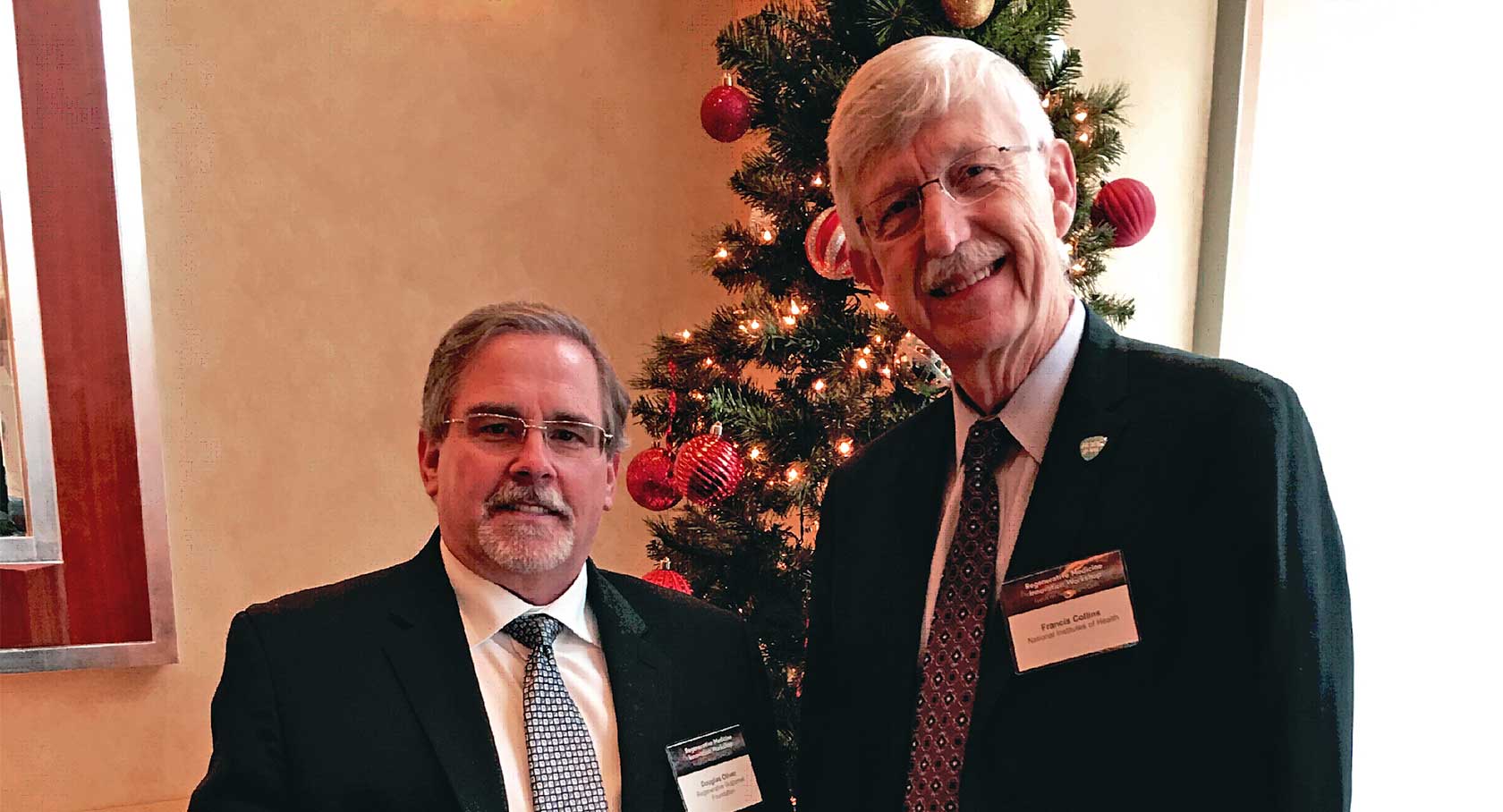Image caption: Human stem cells can be used to create models called blastoids (one shown that has been chemically altered to fluoresce) for studying how early-stage embryos implant into the lining of the uterus.
Models of early-stage embryos could be used to research contraceptives too
By Jake Buehler January 5, 2022 – ScienceNews.com (link to article)
Newly created “blastoids” could give scientists a faster and simpler way to research embryonic development than using fertilized human eggs.
Made of human stem cells, these blastoids are the most developmentally accurate model yet for studying how the blastocyst — a structure present at an early stage of embryonic development — grows and implants into the lining of the uterus, researchers report December 2 in Nature.
Conducting research on human embryos, which are often in short supply, is highly regulated and controversial. But lab-made blastoids can avoid some of those hurdles. While blastoids have been created before, the researchers argue those models don’t replicate blastocyst cells as well as the new blastoids do. What’s more, the team has already used its blastoids to reveal molecules that could be candidates for new contraceptives and fertility treatments.
A week after fertilization, developing human embryos implant into the uterus using a blastocyst, a spherical envelope of cells surrounding the cells that will become the embryo. To replicate this process, the team led by stem cell biologist Nicolas Rivron at the Institute of Molecular Biotechnology of the Austrian Academy of Sciences in Vienna looked to lab-grown human stem cells.
The researchers chemically inhibited molecular pathways involved in the cells’ growth and the timing of life cycle events. As a result, the cells formed blastoids that had the same three cell types found in blastocysts.
When the team put the blastoids on lab-grown cells from the lining of the uterus, the spheres adhered to the surface, re-creating a crucial step in early pregnancy. And the researchers identified a compound that prevents blastoid attachment as well as one that encourages it, revealing their potential as nonhormonal contraceptives or fertility treatments.
These blastoids aren’t thought capable of developing into humans. Still, the team did not let the models develop past 13 days, in accordance with guidelines for human embryos that cap research on their development at two weeks of existence (SN: 6/9/21).




